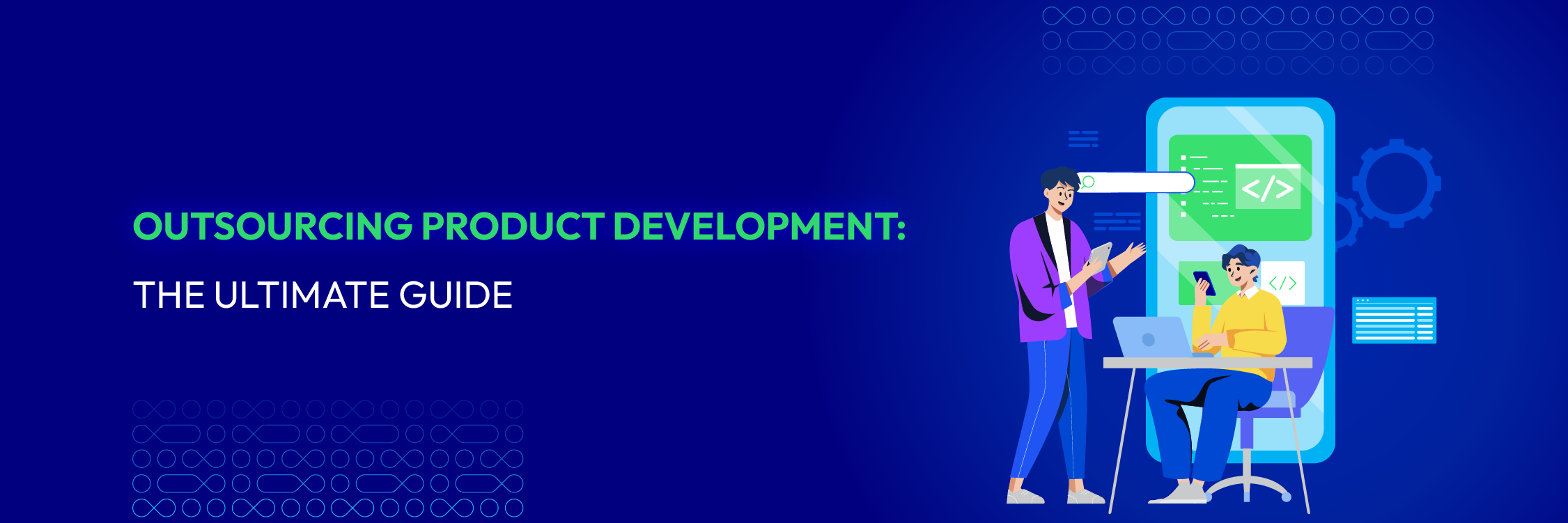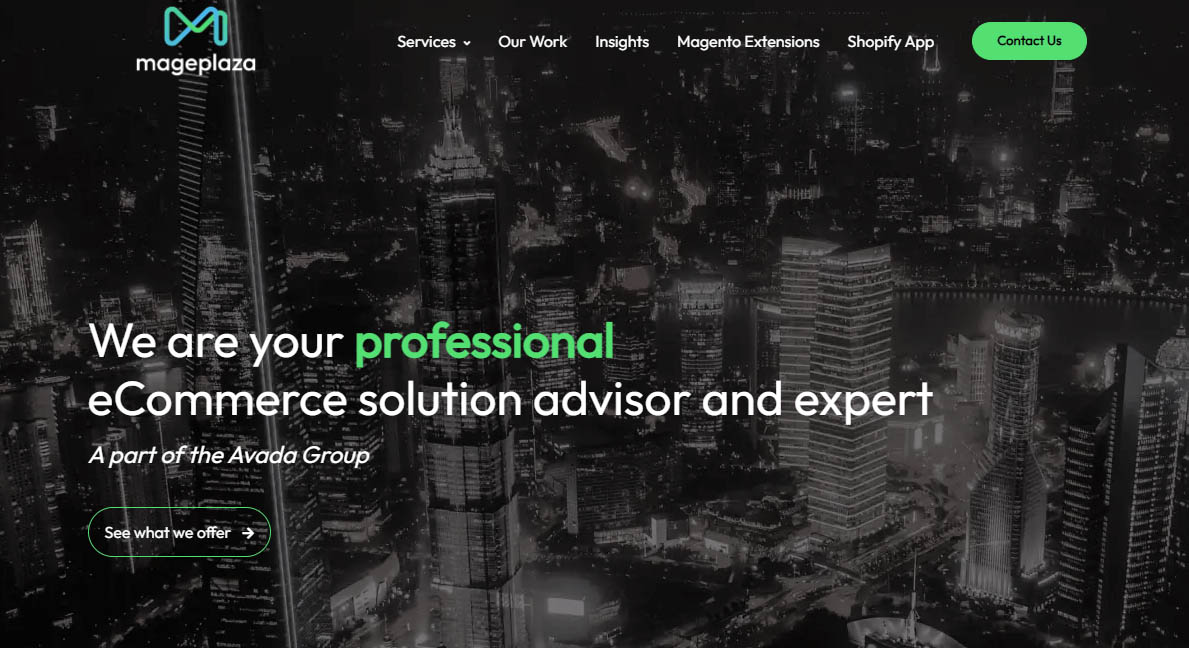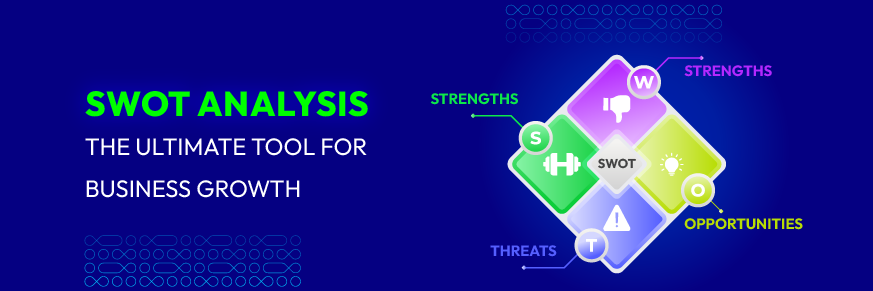Outsourcing Product Development: The Ultimate Guide
Summer Nguyen | 01-10-2024

As technology advances at an unprecedented pace, companies are increasingly looking beyond their in-house capabilities and exploring alternative strategies to drive product development.
This comprehensive guide aims to provide a deep understanding of outsourcing product development, exploring its benefits, risks, best practices, and key factors to consider when embarking on such a venture.
Throughout this guide, we will delve into the intricacies of outsourcing product development, offering insights into the various stages of the process, from finding the right outsourcing partner to managing communication and collaboration effectively.
We will also examine the critical factors to evaluate when deciding whether outsourcing is the right choice for your organization and discuss the potential pitfalls to avoid.
What is outsourcing product development?
Outsourcing product development refers to the practice of delegating the design, development, and manufacturing of a product to an external third-party service provider or a team of experts. Instead of relying solely on internal resources and capabilities, organizations partner with external vendors, often in different locations, to leverage their specialized skills, infrastructure, and cost efficiencies.
When product development outsourcing, a company typically transfers specific tasks or the entire product development lifecycle to the external partner. This includes ideation, concept development, prototyping, engineering, testing, and production.
Outsourcing allows companies to access a broader range of skills, knowledge, and resources that may not be available internally, enabling them to bring products to market faster and more cost-effectively.

However, outsourcing product development also presents specific challenges and risks that organizations must carefully address, such as potential communication barriers, intellectual property protection, maintaining control over the development process, and ensuring alignment with business goals and quality standards.
Successful outsourcing requires a well-defined strategy, effective communication, rigorous vendor selection, and a clear understanding of the goals and expectations of both parties. Product development outsourcing can yield significant benefits and accelerate innovation, helping organizations stay competitive in an ever-changing market.
When do you need to outsource product development?

Organizations may consider outsourcing product development in various situations. Here are some scenarios where outsourcing can be particularly advantageous:
- Limited in-house expertise: If your organization lacks the specific skills, knowledge, or experience required to develop a particular product, outsourcing can provide access to experts with specialized expertise. This is especially relevant for complex or niche projects that require domain-specific knowledge or advanced technical capabilities.
- Resource constraints: If your company is resource-constrained in terms of budget, manpower, or infrastructure, outsourcing can help optimize resource allocation. You can tap into additional talent, facilities, and equipment by leveraging external resources without making significant internal investments.
- Cost savings: Product development outsourcing can often lead to cost savings, especially when working with vendors in regions with lower labor and operational costs. External partners may have streamlined processes, economies of scale, and access to cost-efficient manufacturing facilities, reducing overall costs.
- Time constraints: When there is a pressing need to bring a product to market quickly, outsourcing can expedite the development process. External partners specializing in product development can leverage their experience, resources, and established workflows to accelerate the time-to-market for your product.
- Scalability and flexibility: Outsourcing offers scalability and flexibility in product development. If your organization experiences fluctuations in demand or requires rapid scaling, outsourcing allows you to adjust resources accordingly. This flexibility can be particularly valuable for startups and companies with fluctuating product development needs.
- Focus on core competencies: Outsourcing non-core activities like product development enables organizations to focus their internal resources on their core competencies and strategic initiatives. By delegating product development to external partners, companies can concentrate on areas where they have a competitive advantage, enhancing overall efficiency and effectiveness.
- Risk mitigation: Outsourcing can help mitigate risks associated with product development. Established outsourcing providers often have well-defined processes, quality assurance measures, and regulatory compliance expertise. Collaborating with experienced partners can minimize risks and ensure industry standards and regulations compliance.
It’s crucial to highlight that while outsourcing product development might be advantageous, it’s not ideal for every firm or project. Careful assessment and selection of outsourcing partners are crucial to ensure a successful outsourcing relationship and achieve the desired outcomes.
What are the pros and cons of outsourcing product development?

Pros of outsourcing product development
- Cost savings: Outsourcing product development can lead to significant cost savings for organizations. By partnering with external service providers, companies can avoid the costs of recruiting, training, and maintaining an in-house product development team. Additionally, outsourcing allows access to resources in regions with lower labor costs, enabling organizations to reduce expenses while maintaining quality.
- Enhanced efficiency and productivity: External partners specializing in product development bring expertise, streamlined processes, and efficient workflows to the table. Their experience allows for faster and more efficient execution of development tasks. By leveraging their expertise and resources, organizations can improve operational efficiency, increase productivity, and deliver products to market more quickly.
- Access to advanced technologies and infrastructure: Outsourcing product development provides access to specialized technologies and infrastructure that may be expensive or difficult to establish internally. External partners often have the latest tools, equipment, and software for efficient product development. Leveraging their technological capabilities allows organizations to stay at the forefront of innovation without significant upfront investments.
- Improved scalability and flexibility: Outsourcing allows organizations to scale their product development efforts as needed. During peak periods or when launching new products, external partners can quickly allocate additional resources and manpower to meet the increased demand. Conversely, during periods of lower demand, organizations can scale down the resources without the burden of maintaining a large in-house team.
- Access to specialized expertise: Outsourcing product development provides access to a wide range of specialized technical expertise. External partners often have teams of professionals with deep knowledge and experience in specific technologies, engineering disciplines, or industry verticals. This expertise can help organizations overcome technical challenges, implement best practices, and leverage the latest advancements in product development.
- Rapid innovation and time-to-market: Partnering with external experts can accelerate innovation and reduce time-to-market for new products. Outsourcing allows organizations to tap into the experience and creativity of professionals constantly exposed to various projects and industry trends. This can lead to rapidly developing high-quality products that meet market demands and give organizations a competitive advantage.
- Risk mitigation and quality assurance: Established outsourcing providers have well-defined processes and quality assurance measures in place to mitigate risks and ensure the delivery of high-quality products. They follow industry best practices, adhere to regulatory requirements, and have experience managing product development risks. This reduces the burden on organizations to establish these processes internally.
Cons of outsourcing product development
- Security: Outsourcing involves sharing sensitive information, trade secrets, and intellectual property with external parties. This can introduce security risks, such as data breaches, confidentiality breaches, or unauthorized use of proprietary information. Careful selection of reliable and trustworthy outsourcing partners and appropriate legal agreements and security measures can help mitigate these risks.
- Protection of intellectual property: When outsourcing product development, there is a concern about protecting intellectual property (IP) rights. Organizations must establish clear agreements and safeguards to ensure that their IP remains secure and that the outsourcing partner respects confidentiality and does not infringe on IP rights.
- Misunderstanding of the product’s core idea: Communication challenges and language barriers can sometimes lead to misunderstandings between the outsourcing partner and the organization. It is vital to establish effective communication channels, provide comprehensive project documentation, and maintain regular communication to clearly understand the product’s requirements, goals, and vision.
What are the most popular outsourcing product development services?
End-to-end product engineering outsourcing
This service encompasses the entire product development lifecycle, from ideation and conceptualization to design, development, testing, and deployment. Outsourcing partners collaborate closely with organizations to understand their vision, goals, and requirements and then take on the responsibility of executing the various stages of product engineering.
This includes requirements gathering, system architecture design, software development, quality assurance, and project management. The outsourcing partner brings expertise, resources, and experience to ensure efficient and successful product development.
Increasing scale using product architecture

Outsourcing product architecture services involves leveraging external expertise to design a scalable and robust architecture for a product. The outsourcing partner works closely with the organization to understand the product requirements, anticipated user base, performance needs, and future scalability requirements.
Based on this information, they design the product’s technical infrastructure, including selecting technologies, frameworks, and infrastructure components. A well-designed architecture ensures the product can handle increasing demands, maintain performance, and support future enhancements or expansions.
Finishing product management
In situations where organizations have an ongoing product development initiative but face challenges in completing the development process, outsourcing product management services can be beneficial. The outsourcing partner takes over the project and collaborates with the organization to understand the current state of the product and the remaining development tasks.
They then allocate resources, manage the development team, and ensure timely completion of the product. This service often involves code review, bug fixing, feature implementation, and quality assurance to finalize the product and meet the organization’s requirements.
Developing sophisticated web applications
Outsourced software products of sophisticated web applications involve partnering with external experts specializing in web application development. These experts have in-depth knowledge of modern web technologies, frameworks, and best practices. They work closely with organizations to understand their requirements, user experience goals, and business objectives.
The outsourcing partner then designs and develops the web application, implements complex functionality, integrates with databases and external services, and ensures responsive and intuitive user interfaces. The aim is to create high-performance, scalable, and visually appealing web applications tailored to the organization’s needs.
Adapting your current applications
Organizations often require updates or adaptations to their existing applications as technology evolves to align them with changing business needs or new technological standards. Outsourcing the transformation of current applications involves collaborating with experts who can analyze the existing application, identify areas for improvement, and propose appropriate strategies.
This may involve refactoring the codebase, integrating new features or APIs, migrating the application to a new platform or architecture, enhancing security, or improving performance. The outsourcing partner ensures a smooth transition and helps the organization modernize and optimize its existing applications.
Guide to outsourcing product development services
![]()
1. Create software specification
To properly communicate your project needs to potential outsourcing partners, thorough software specifications must be created. Define your product’s functionality, features, performance goals, user interface, and other particulars in depth.
Consider employing user stories, wireframes, mockups, and flowcharts to give visual representations and improve clarity. Accurate proposals can be built on clearly specified specifications, ensuring that you and the outsourcing partner agree on the project’s parameters.
2. Decide on a cooperative model
Choosing the right cooperative model depends on the nature of your project, budget, timeline, and desired control level. Project-based outsourcing involves outsourcing the entire project to the vendor, providing them with the necessary specifications, and allowing them to manage the development process.
Dedicated team outsourcing involves establishing a long-term partnership with an outsourcing vendor and collaborating closely with a dedicated team of professionals who work exclusively on your project. Understanding your needs and preferences will help you determine which model best fits your requirements.
3. Select the best vendor
The success of your project depends on choosing the best outsourcing provider. Start by researching extensively and assessing their background, skills, and experience. Examine their portfolio to determine their expertise in similar projects or technologies.
Consider their cultural fit, communication abilities, and responsiveness to achieve effective collaboration. To determine the shortlisted vendors’ comprehension of your project and their capacity to meet your needs, request proposals from them and hold interviews or meetings. References and client endorsements can also shed light on a person’s dependability and caliber of work.
These are the reasons why you should choose Mageplaza for outsourcing product development services:

- Extensive knowledge: Our developers have nearly ten years of expertise and are knowledgeable about every facet of this platform. They have worked with clients in various sectors, including manufacturing, food & beverage, healthcare, education, and e-commerce.
- Code: Using extensive code knowledge, we create innovative solutions. Additionally, we thoroughly test in all popular devices and browsers. An additional specialist with years of experience in e-commerce will go through every line of code one more time.
- Transparency: Our project managers speak with you frequently by email, phone, and video chats to ensure you are always informed of the status of your project. If you choose, they’ll update you daily, every two months, or even every week.
- Timeliness: We collaborate closely with you to develop a reasonable schedule for the project’s scale, the resources needed, and any potential obstacles. Then, we actively work to ensure your project stays on course and is finished by the deadline.
- Security: Before beginning any project, we’ll sign NDAs and contracts to safeguard your privacy and security. Additionally, we’ll keep your data current by adding high-security layers to your Shopify site. Therefore, when working with us, you may feel secure.
LET US KNOW YOUR DEVELOPMENT REQUIREMENTS
4. Consent to contracts and agreements
Once you’ve selected a vendor, clear contracts and agreements must be in place. Hire legal advice to create or review the contracts to protect your interests.
Project scope, delivery schedules, deliverables, payment conditions, intellectual property rights, confidentiality, data security, liability, and dispute resolution procedures should all be covered in the agreements. Ensure both parties understand the conditions and obligations and that they align with your company’s goals and expectations.
5. Launch the initial version of the product
As you design your product, work closely with your outsourcing partner. Establish open contact lines for discussing progress, answering queries, and giving feedback, such as through scheduled meetings or video conferences. Test the deliverables and project milestones to ensure the final product satisfies your requirements and quality standards.
Review and assess the progress frequently to ensure it aligns with the project’s goals. When the product’s first iteration is prepared, work with the outsourcing partner to organize the product launch and consider any potential marketing or promotion needs.
6. Support continuously
Following the initial launch, continual support and upkeep are essential. Work together with the outsourcing partner to resolve any problems or glitches that may appear, and take user feedback into account to make the required adjustments.
Establish a detailed support and maintenance strategy that addresses response times, problem-solving techniques, and regular software updates. To ensure continuing collaboration and a seamless transfer for any upcoming improvements or changes, keep lines of communication open with the outsourced partner.
Conclusion
Outsourcing product development can be a game-changer for organizations looking to innovate, optimize resources, and accelerate time-to-market.
This comprehensive guide has explored the various steps and considerations involved in outsourcing product development services. Organizations can clearly articulate their requirements by creating software specifications, setting the foundation for successful collaboration with outsourcing partners.







